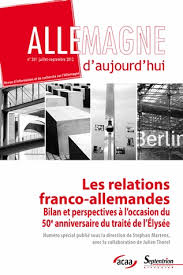PUBLICATIONS SINCE 2010
La question controversée des violences anti-serbes dans Sarajevo assiégée : tentative d’un bilan provisoire [The controversial issue of anti-Serb violence in besieged Sarajevo: an attempt at a preliminary assessment]
Revue Historique des Armées, 2022/1 (N° 304), p. 9-25.
https://www.cairn.info/revue-historique-des-armees-2022-1-page-9.htm
The siege of Sarajevo and the violence committed by Bosnian Serb troops against the city and its population are among the best known and most studied events of the war in Bosnia and Herzegovina. Less well known than this violence against the city are the acts of violence committed inside the city by its defenders in response to the siege, which contributed to affecting the population even more than it already was. This paper focuses on this „internal zone of violence“ (Jelena Golubović) and looks specifically at the situation of Serbs living inside the besieged Sarajevo, to examine the extent to which they were victims of this internal violence. This highly controversial topic within Bosnia and Herzegovina has so far attracted little scientific research. In this context, the aim of this article is not to offer an in-depth study, but to outline, on the basis of existing literature and sources, a provisional synthesis of established facts and open questions and to formulate proposals for future research.
Für einen offensiv-konstruktiven Umgang mit der Schuldfrage: Die Zeitschrift „Die Versöhnung“ und ihr gesellschaftspolitisches Engagement während und nach dem Ersten Weltkrieg (1917-1919) [Dealing with the question of guilt in a proactive-constructive way: The journal “Die Versöhnung” and its socio-political commitment during and after the First World War (1917-1919)]
In: Anne Couderc / Corine Defrance / Ulrich Pfeil (eds.), La réconciliation / Versöhnung. Histoire d’un concept entre oubli et mémoire / Geschichte eines Begriffs zwischen Vergessen und Erinnern, Brussels et al: Peter Lang, 2022, 135-153
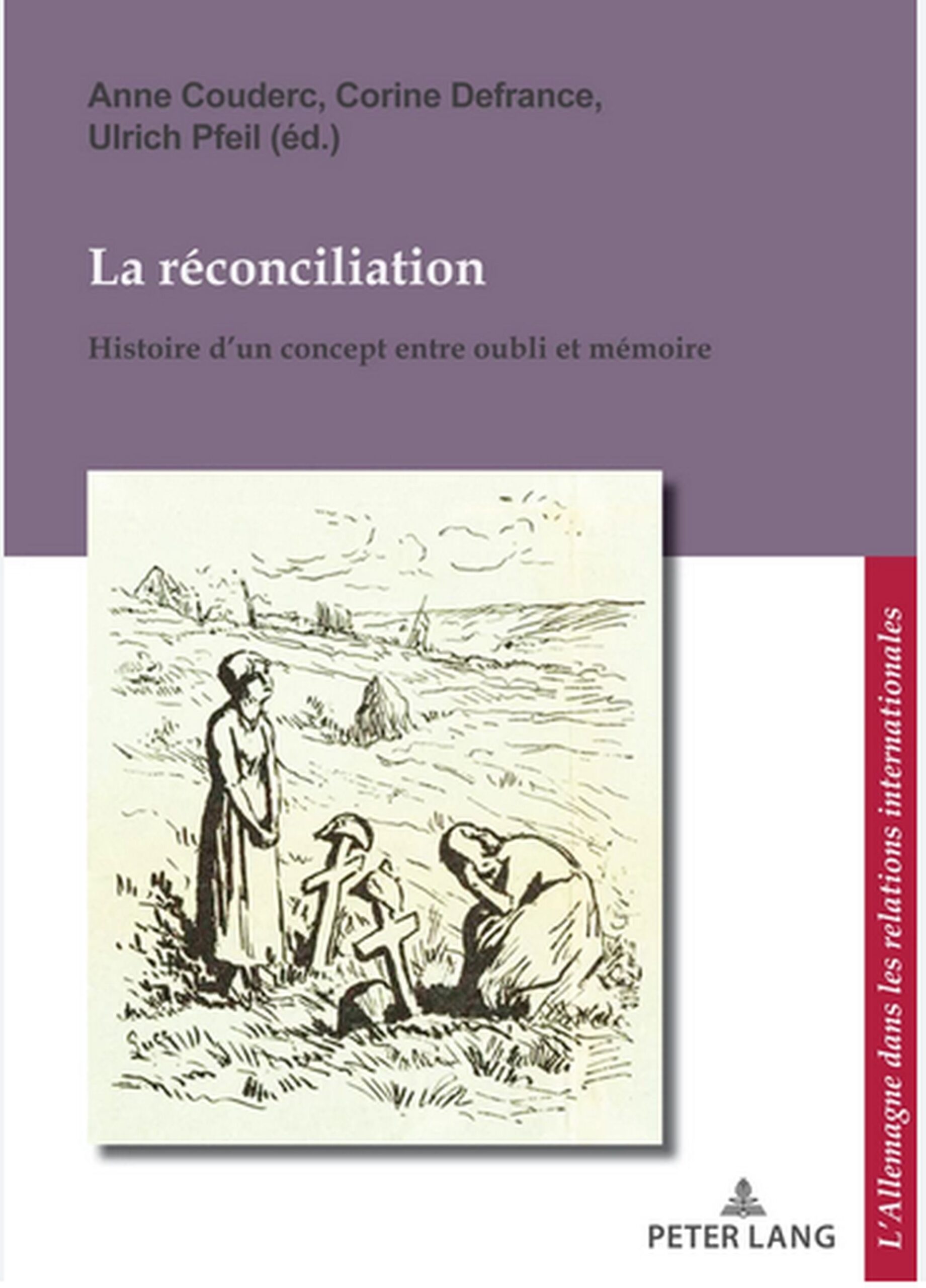 “Die Versöhnung“ [ = Reconciliation]: This was the programmatic title of a weekly journal published in Zurich between August 1917 and June 1919. It was embedded in a broad international network whose central protagonist was the Austrian pacifist and sociologist Rudolf Broda. In the discussions on war and peace during and after the First World War, it was the resolute concern of the journal to stand up for a “reconciliation of the peoples” and a lasting peace. But what exactly did it mean by this? In other words, what vision(s) of reconciliation did the journal advocate, and what did it specifically propose to achieve such reconciliation? Building on the analysis of the journal’s content, the text pays particular attention to one aspect: To what extent was the question of guilt for the outbreak of the World War addressed and seen as an obstacle or as beneficial to the desired reconciliation and peace order? Before that the text provides general information about the journal, and at the end places it in the general context of peace activism at the time of the First World War in order to see to what extent “Die Versöhnung” and its stance represents something specific in comparison to other initiatives and positions of the time.
“Die Versöhnung“ [ = Reconciliation]: This was the programmatic title of a weekly journal published in Zurich between August 1917 and June 1919. It was embedded in a broad international network whose central protagonist was the Austrian pacifist and sociologist Rudolf Broda. In the discussions on war and peace during and after the First World War, it was the resolute concern of the journal to stand up for a “reconciliation of the peoples” and a lasting peace. But what exactly did it mean by this? In other words, what vision(s) of reconciliation did the journal advocate, and what did it specifically propose to achieve such reconciliation? Building on the analysis of the journal’s content, the text pays particular attention to one aspect: To what extent was the question of guilt for the outbreak of the World War addressed and seen as an obstacle or as beneficial to the desired reconciliation and peace order? Before that the text provides general information about the journal, and at the end places it in the general context of peace activism at the time of the First World War in order to see to what extent “Die Versöhnung” and its stance represents something specific in comparison to other initiatives and positions of the time.
The Wars in Bosnia and Ukraine: Can We Learn from Sarajevo?
Balkan Insight, 3.3.2022
https://balkaninsight.com/2022/03/03/the-wars-in-bosnia-and-ukraine-can-we-learn-from-sarajevo/
Opinion piece about the similarities and differences between the wars agianst Ukraine and against Bosnia and Herzegovina. Also available in Bosnian /Croatian /Serbian and in Albanian.
Digital platform “Wake up Europe!” – 100 stories about international solidarity in difficult times – Messages from Bosnia and Herzegovina 1992 – 1995
History Museum of Bosnia and Herzegovina, Sarajevo, 2022
https://wakeupeurope.ba/?lang=en
The digital platform “Wake up Europe!” gathers 100 stories about initiatives and groups that were part of international solidarity efforts in Europe with citizens of Sarajevo and Bosnia and Herzegovina during the 1992-1995 war. With the selected 100 stories, the platform wants to offer a kaleidoscope illustrating different dimensions of these solidarity efforts by citizens, artists, intellectuals, journalists, parliamentarians, cities, informal groups and NGOs across Europe who decided not to remain bystanders: We show examples from different countries, from different fields of activity (e.g. humanitarian convoys, help for refugees, demonstrations, cultural activities), involving different target groups (e.g. youth, women, trade unions, civic groups) and different topics which were emphasized and discussed, for example the memory of World War II and the question of military support for BiH. This digital platform is based on research I conducted in connection with the exhibition „Wake up Europe! Support and Solidarity Mobilisations for Bosnia and Herzegovina and its Citizens during the 1992-1995 War” which was organised by the History Museum of Bosnia and Herzegovina in Sarajevo in 2021.
Outbreak of war memories? Historical analogies of the 1990s wars in discourses about the coronavirus pandemic in Bosnia and Herzegovina and Croatia
With Tamara Banjeglav, Southeast European and Black Sea Studies, 21:3, 2021, 353-372
https://www.tandfonline.com/doi/full/10.1080/14683857.2021.1942656
The article examines how historical analogies and collective memories of the 1990s wars figured in public discussions during the first wave of the coronavirus crisis in Bosnia and Herzegovina and Croatia. The research is based on the analysis of political speeches, media articles and social networks posts, examining the presence – or absence – of war analogies in these sources in the first period of the coronavirus pandemic, from mid-March 2020 to mid-May 2020. The article examines in which ways historical analogies referring to the 1990s wars were used during the coronavirus pandemic in two societies which have a recent war experience. By analysing to what extent and in which ways analogies to the war were used in political and societal discourses in Bosnia and Herzegovina and Croatia, this article adds to the existing literature on the use of historical analogies by focusing on the use of war analogies in societies where the war is not an abstract reference, but a recent, lived experience.
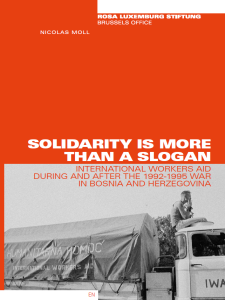
Solidarity is more than a slogan – International Workers Aid during and after the 1992-1995-war in Bosnia and Herzegovina
Rosa Luxemburg Stiftung Brussels Office, 2021, 262 pages.
You can download the PDF here.
You can order a free print version here
For the majority of people in Europe, the war in Bosnia and Herzegovina remained mainly a TV event; many felt that it did not really concern them or that nothing could be done about it. But at the same time there were also tens of thousands of individuals in countries across Europe who decided that they did not want to remain bystanders, just watching what was going on, but were determined to do something. This went way beyond professional aid organisations: many smaller civil society organisations and especially newly created, often informal, groups launched numerous activities. International Workers Aid (IWA) was one of the initiatives that emerged from these civil society mobilisations during the war in Bosnia and Herzegovina. It was a highly original initiative in several respects.
From Discourse to Practice: A Case Study from the Western Balkans on the Transferability of Franco-German Experiences
In: Nicole Colin / Claire Demesmay (eds.), Franco-German Relations Seen from Abroad. Post-war reconciliation in International Perspectives, Springer, 2021, 37-50;
For more info please FOLLOW THIS LINK
Since the end of the wars during the break-up of Yugoslavia in the 1990s, Franco-German reconciliation and cooperation have often been presented as an example to follow both in and for the Western Balkans. However, while there have been many discourses on the “Franco-German model,” they have rarely led to a concrete transfer of experiences. One of the rare exceptions relates to the Regional Youth Cooperation Office (RYCO), created in 2016 by the six governments of the Western Balkans. This chapter offers a more precise analysis of the role of the Franco-German actors involved in the establishment of RYCO and examines how the question of transferring experiences was handled in practical terms and discussed during this process.
1945 versus 1995, Europe versus the Balkans? A plea for an inclusive and differentiating pan-European culture of remembrance
Rosa Luxemburg Stiftung – Brussels Office, 5.5.2020;
English version online: FOLLOW THIS LINK
German version online: FOLLOW THIS LINK
Essay on the importance of including the Yugoslav and post-Yugoslav history and memories in an European culture of remembrance
Promoting ‘Positive Stories’ of Help and Rescue from the 1992-1995 War in Bosnia and Herzegovina. An Alternative to the Dichotomy of Guilt and Victimhood?
In: Südosteuropa. Journal of Politics and Society, vol 67, n°4, 2019, 447-475,
PDF in open access: DOWNLOAD HERE
Public discourses about wars and mass violence are often dominated by questions of guilt and victimhood as well as a focus on the figures of ‘perpetrators’ and ‘victims’. This can also be observed concerning the public remembrance of the 1992-1995 conflict in Bosnia-Herzegovina. However, attempts were made here to promote the memory of another war-related figure: that of the rescuer who helped people ‘from the other side’. The author analyses these attempts at remembrance in Bosnia-Herzegovina, and places them within the context of global efforts to publicly acknowledge rescuers, in particular the ‘Righteous Among the Nations’.
“Pour une Europe solidaire”: Se mobiliser contre la guerre en Bosnie-Herzégovine, 25 ans plus tard [“For a Europe of solidarity”: mobilising against the war in Bosnia and Herzegovina, 25 years later]
In: La Revue Nouvelle, n°5/2019
For more info online please FOLLOW THIS LINK
During the war in Bosnia and Herzegovina, from 1992 to 1995, numerous individuals and groups in different European countries got engaged to protest against the war and the policy of “ethnic cleansing” and to show solidarity with Bosnia and Herzegovina and its citizens. This broad and heterogenous socio-political mobilization, at the intersection of citizen engagement and humanitarian engagement, has largely fallen into oblivion and deserves all the more to be revisited to try to better understand its scope and its signifcation. What forms has this mobilization taken and what was it aimed at? What discourses on Europe did it produce, and to what extent can we speak of an European movement? Why is this mobilization so little known? And what can be the meaning of this commitment today, twenty-five years later?
Book review:
Mischa Gabowitsch (ed.), Replicating Atonement. Foreign Models in the Commemoration of Atrocities, Cham, Palgrave Macmillan, 2017
in: Werkstatt Geschichte Heft 80, 2018, 140-144
Available online as PDF: DOWNLOAD HERE
“Enough is enough”: Why and how a Belgian village decided to stop commemorating a massacre from World War One – or did it?
In: Mémoires en jeu / Memories at stake. Revue critique interdisciplinaire et multiculturelle sur les enjeux de mémoire, published online (as running text and pdf) 17.1.2019:
For reading the text online please or download as pdf FOLLOW THIS LINK
Is there a time to stop commemorating? Two years ago I heard that a village in Belgium, whose population had been massacred by the German Army in 1914, had recently decided to stop the traditional annual commemoration of this massacre. This sounded unusual, even spectacular. I knew about communities who do not want to commemorate acts of violence because their majority had been on “the perpetrator-side”. I knew about survivors of mass-violence who preferred not to remember what had happened to them or who were denied possibilities to commemorate this. I knew about memory sites which had fallen in oblivion, or commemorations which had been abandoned after a political regime-change. But I had never before heard of a community which had been the victim of a massacre, and which had regularly, over decades, commemorated this massacre, and then one day, without any change in the political situation, decided deliberately to stop this annual commemoration. So I decided to investigate this case.
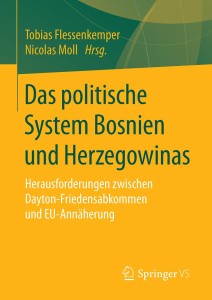
Tobias Flessenkemper / Nicolas Moll (Hg.), Das politische System Bosnien und Herzegowinas. Herausforderungen zwischen Dayton-Friedensabkommen und EU-Annäherung [The political system of Bosnia and Herzegovina. Challenges between Dayton-Peace-Agreement and EU-rapprochment]
Springer VS, 2018, 310 p.
There are good reasons to deal with Bosnia and Herzegovina. Its political system exemplifies, despite all specificities, realities and challenges that are relevant to the whole of Europe. As a former Yugoslav republic and country of the Western Balkans, Bosnia and Herzegovina is in the process of EU rapprochement with the goal of membership. In addition, there are many and intensive relationships especially with German-speaking countries. But how well do we know this country? What characterizes the political system and the socio-political situation of Bosnia and Herzegovina almost a quarter of a century after the end of the war and the Dayton peace agreement? The chapters of the book deal with the historical development of the country, constitutional requirements and reality, federalism, the party system, religious communities, cultural and educational policy, the role of civil society, the economy and the relations with the EU. The book aims to contribute to a better understanding of Bosnia and Herzegovina and to reflect on political and social challenges in Europe.
For more information on the website of SPRINGER VS please FOLLOW THIS LINK
As EBOOK FOLLOW THIS LINK
Detailed table of content (as PDF): DOWNLOAD TOC PDF
“Will Marseille Become Another Sarajevo?” The Memory of Sarajevo 1914 and its Impact on the European Crisis after the Assassination of King Alexander in 1934
In: Südost-Forschungen, Band 75, 2016 (= Festschrift für Wolfgang Höpken – Erfahrungs- und Handlungsräume. Gesellschaftlicher Wandel in Südosteuropa seit dem 19. Jahrhundert zwischen dem Lokalen und dem Globalen), 136-152
In situations of political crisis, what role do historical analogies and memories of earlier crisis situations play? To address this question, the example of the Marseille Assassination in 1934 and its aftermath can provide a striking and revealing case study. When King Alexander of Yugoslavia was assassinated on 9th October 1934 in Marseille, this dramatic event immediately provoked comparison, throughout Europe, with the assassination of Franz Ferdinand in Sarajevo in 1914; it raised the question of whether Marseille would become “another Sarajevo” and lead to a new war. At the same time, there were also strong attempts to refute parallelism between Sarajevo and Marseille, highlighting the differences between both events and their contexts. By whom, for which purposes and in which ways was the memory of Sarajevo 1914 used after the assassination of King Alexander and during the subsequent international crisis? And to what extent did the references to Sarajevo 1914 contribute to the escalation or de-escalation of the post-assassination crisis, which was eventually resolved at the League of the Nations in December 1934? The paper is based on an analysis of archival sources and press articles from different European countries and sees itself as a contribution to European comparative and transnational research on the remembrance of the First World War and the impact and use of traumatic memories during political crisis situations.
Book review:
Alexander Korb, Im Schatten des Weltkriegs: Massengewalt der Ustaša gegen Serben, Juden und Roma in Kroatien 1941–1945 [In the Shadow of World War: Ustaša Mass Violence against Serbs, Jews, and Roma in Croatia, 1941–1945], Hamburg: Hamburger Edition, 2013
In: Southeastern Europe, Volume 41, Issue 1, 2017, 82-84
Youth Exchange as Motor for Regional Cooperation? – Origins, Development and the Political Significance of the Future “Regional Youth Cooperation Office” (RYCO)
In: Südosteuropa Mitteilungen 05-06/2016, 17-26
German version: Jugendaustausch als Motor für regionale Kooperation? Vorgeschichte, Entwicklung und politische Bedeutung des zukünftigen “Regional Youth Cooperation Office” (RYCO)
PDF online available on the website of the Südosteuropa Gesellschaft
In July 2016, the governments of Albania, Bosnia and Herzegovina, Kosovo, Macedonia, Montenegro and Serbia signed the agreement for the establishment of the « Regional Youth Cooperation Office » (RYCO), a new institutional mechanism which will support the development of youth exchange in the Western Balkans. This new institution did not come out of nowhere : Since the end of the Yugoslav break-up wars, there have been different regional youth exchange projects and also discussions about possible forms of institutional support for these encounters, but it is only in 2014, with the beginning and in the framework of the « Berlin-process », that the governments of the region took up this idea. Besides the political will of the governments, other decisive factors for the establishment of RYCO have been the support from external actors and the active involvement of civil society actors. The article also discusses challenges for RYCO and the potential impact the future institution might have not only for young people, but also for the relationship between governments and civil society and for the regional cooperation in general within the Western Balkans.
Book review:
Ivo Komšić: The Survived Country. Dividing Bosnia and Herzegovina. Who, When, Where. Translated by Ulvija Tanovic, Sarajevo-Zagreb, Synopsis, 2013, 552 p.
In: Südosteuropa, 64 – 3/2016, 419-421
For more info online please FOLLOW THIS LINK
Book review:
Xavier Bougarel, Survivre aux empires. Islam, identité nationale et allégeances politiques en Bosnie-Herzégovine [Surviving the Empires. Islam, national identity and political allegiances in Bosnia and Herzegovina], Paris, Karthala, 2015, 383 p.
In: Südosteuropa, 64 – 1/2016, 109-110
For more info online please FOLLOW THIS LINK
Lässt sich Versöhnung exportieren? Deutsch-französische Aktivitäten auf dem Balkan (Is it possible to export reconciliation? Franco-German activities in the Balkans)
In: Corine Defrance /Ulrich Pfeil (dir.), Verständigung und Versöhnung. Deutschland nach dem “Zivilisationsbruch”, Bern u.a., Peter Lang, 2016, 681-699
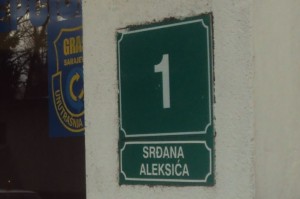
A positive hero for everyone? The memorialization of Srđan Aleksić in post-Yugoslav countries
Contemporary Southeastern Europe 2016, 3(1), 1-31
To download as pdf please FOLLOW THIS LINK
Despite various attempts, the memory of persons who helped and rescued endangered persons “from the other side” during the breakup wars of Yugoslavia is rarely publicly acknowledged. There is, nevertheless, one exception: the case of Srđan Aleksić, a young Bosnian Serb who was killed while saving a Muslim acquaintance in Trebinje in January 1993. Since 2007, Srđan Aleksić has not only become publicly known, but his memory is also widely positively-connoted in different countries and by groups of various political and ethnic backgrounds in the post-Yugoslav space. This article analyzes the emergence of this memory and the narratives around it, how fragile or strong the consensus is which has emerged around his memory, and what this memorialization indicates about the current memory culture in post-Yugoslav countries and its evolutions.
“La réconciliation ne peut pas être imposée de l’extérieur”: La difficile interaction entre l’international et le local dans le champ de la réconciliation en ex-Yougoslavie (“Reconciliation cannot be imposed from outside” : The difficult interaction between international and local levels in the field of reconciliation in the post-Yugoslav space)
In : Les Cahiers Sirice 1/2016 (N° 15) , p. 83-98
For read online or download as pdf please FOLLOW THIS LINK
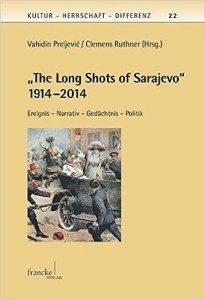 Die Mutter aller Attentate? Sarajevo 1914, Marseille 1934, Dallas 1963, Twin Towers 2011 (The mother of all assassinations? Sarajevo 1914, Marseille 1934, Dallas 1963, Twin Towers 2011)
Die Mutter aller Attentate? Sarajevo 1914, Marseille 1934, Dallas 1963, Twin Towers 2011 (The mother of all assassinations? Sarajevo 1914, Marseille 1934, Dallas 1963, Twin Towers 2011)
In: Vahidin Preljevic / Clemens Ruthner (ed.), “The long shots of Sarajevo”, 1914-2014. Ereignis – Narrativ – Gedächtnis – Politik,
Tübingen, Narr Francke, 2016, 617-634
BCS-version:
Majka svih atentata? Sarajevo 1914, Marseille 1934, Dallas 1963, Twin Towers 2011
In: Vahidin Preljevic / Clemens Ruthner (ed.), Sarajevski dugi pucnji 1914. Dogadjaj – narativ – pamcenje, Zenica, Vrijeme, 2015, 527-541
To what extent has ‘Sarajevo 1914’ become a central reference and benchmark of comparison in the history of political assassinations in the 20th and 21st century?
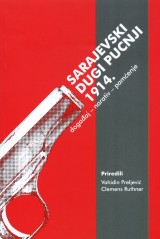
This question will be discussed through three case studies: the assassination of King Alexander of Yugoslavia in 1934 in Marseille, the murder of John F. Kennedy in 1963 in Dallas and the attacks on New York and Washington on September 11, 2001. In each case the analysis examines how and for which reasons reference to ‘Sarajevo 1914’ was made in the public discussion in Europe and the USA in the aftermath of these events. The second part analyses what the specificities in the public interpretations of ‘Sarajevo 1914’ and of the three other assassinations are in a comparative perspective. The aim of the text is to contribute to a better understanding of collective representations and interpretations of ‘Sarajevo 1914’ and the three other assassinations, and to a discussion about the role of historical analogies for the interpretation of events in sociopolitical discourses.
Book review:
Jörg Heeskens, Bosnien und Herzegowina auf der Hand: Alles Wissenswerte für Ihre Reise nach Bosnien und Herzegowina , Belgrad, Komshe Verlag, 2014
in: Südosteuropa-Mitteilungen, 06/2015, 88-9
“When A Man Does Good…”: Representations of Help and Rescue in Movies about the 1992-1995 War in Bosnia and Herzegovina
In: DIOGEN pro culture magazine, Special Book of Proceedings, 1.9.2015: 1st International Symposium on Culture of Remembrance Bosnia and Herzegovina (International University Sarajevo, 12.-13.4.2014), 7-18.
Available online as PDF: DOWNLOAD PDF
To what extent do fictional movies about the Bosnian War deal with the topic of rescue and help during the war, and how does this relate to general tendencies in the public remembrance of the War, in Bosnia and Herzegovina and elsewhere? In many films that have been produced since the end of the war to the present day, rescue and help are either not present or are shown as something irrelevant or impossible. There are, however, a certain number of movies which present and deal with acts of help and rescue. Differences in the treatment of the topic can be found between international (Western) productions and productions from the Western Balkans: while the first emphasize the positive and successful intervention of international actors and, in a later arena, the ambiguity of perpetrator-rescuers, the latter insist more often on the absence of rescue or on interethnic rescue in combination with dramatic and tragic aspects. Nevertheless also among film directors from the Balkans an evolution can be seen, with the appearance in the past decade of films showing partially successful interethnic rescue actions. The fact that interethnic rescue is not a dominating topic but is lately attracting more attention on the cinematographic level reflects general tendencies of public remembrance in the Balkans: The strong focus on victims and perpetrators within the highly polarized public remembrance of the war does not leave much space for the topic of interethnic rescue, but the public interest in figures of interethnic rescuers as role models for reconciliation and civic courage has been growing in recent years. There are also links between this general tendency and the cinematographic production, as is illustrated by the movie “Circles” from 2013, which has actively participated in the popularization of the memory of Srđan Aleksić, a young Bosnian Serb who saved a Muslim in 1993. Additional to the analysis of the cinematographic treatment of the rescue-topic in relation with the public remembrance of the Bosnian war, the article puts this treatment in the context of the development of rescuer-movies, especially in relation with the Holocaust, which occurred in Europe and elsewhere in the last two decades, in parallel with the growing general public interest in the memory of rescuers in times of war and mass violence.
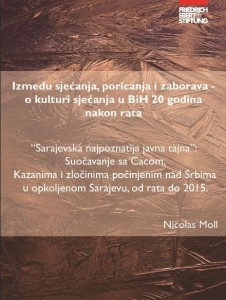
“Sarajevska najpoznatija javna tajna”: Suočavanje sa Cacom, Kazanima i zločinima počinjenim nad Srbima u opkoljenom Sarajevu, od rata do 2015. (“Sarajevo’s most known public secret”: Dealing with Caco, Kazani and crimes committed against Serbs in besieged Sarajevo, from the war until 2015)
Friedrich Ebert Foundation BiH, Sarajevo, first edition 2015, second edition 2016 with an additional afterword
English version available online as PDF: DOWNLOAD PDF
German version as PDF: DOWNLOAD PDF
German version Afterword 2016 as PDF: DOWNLOAD PDF
Two names have become synonymous with crimes committed against Serbs by units of the Army of Bosnia and Herzegovina within besieged Sarajevo during the 1992-1995-war: Mušan Topalović Caco and Kazani. Caco was the commander of the 10th Mountain Brigade of the First Corpus of the Army of BiH, who controlled parts of the old town of Sarajevo and who committed numerous crimes, especially against Serb civilians. Kazani is the name of a pit on the Trebević mountain, situated in the area controlled by the 10th Mountain Brigade, which Caco and his men used as place for murder and as a mass grave for their victims. How did Caco and Kazani become a symbol of the crimes committed against Serbs during the siege of Sarajevo, and how did the public discussion around these topics unfold and develop in Sarajevo during the war and the following two decades? Who have been / who are the different sociopolitical actors involved in these discussions, and which arguments and discursive strategies did / do they use? The crimes against Serbs from Sarajevo committed by units of the Army of BiH are a particularly sensitive, controversial and often polemical topic in relation with the history of the besieged Sarajevo, involving many different, often contradictory attitudes: glorification of Caco, denial and relativisation of the crimes and also political instrumentalisation of them, and at the same time various efforts to publicly acknowledge the crimes committed and to protest against their denial and down-playing. This text analyzes the complex (and ongoing) process of dealing with these crimes from the war until today and also embeds the topic in a more general question crucial for any post-war-society: To what extent are social or polical groups willing not only to emphasize their own victimhood related to crimes committed against them by other groups, but also to publicly acknowledge crimes which have been committed by members of their own group?
 An Integrative Symbol for a Divided Country? Commemorating the 1984 Sarajevo Winter Olympics in Bosnia and Herzegovina from the 1992-1995 War until Today
An Integrative Symbol for a Divided Country? Commemorating the 1984 Sarajevo Winter Olympics in Bosnia and Herzegovina from the 1992-1995 War until Today
in: Politička misao, Vol.51 No.5, May 2015, 127-156.
Available online as PDF: DOWNLOAD PDF
To what extent can deeply divided societies develop integrative and connecting symbols that are transgressing political, social and national borders and division lines? The present text addresses this question by analyzing the discourses and memories of the 1984 Sarajevo Winter Olympics in contemporary Bosnia and Herzegovina (BiH). After examining the discourses around the Games in 1984, the text analyzes the practices and narratives around the official anniversaries of the Games which took place in Bosnia and Herzegovina in 1994, 1999, 2004, 2009, and 2014. It furthermore explores how Olympic symbols are used today in the public urban space in Sarajevo and in East Sarajevo, and how ordinary people from different parts of BiH perceive the Sarajevo Olympics in the present day. The analysis of the official anniversary commemorations shows that the Sarajevo Olympics, a symbol of a united Yugoslavia in 1984, and a symbol of destruction and division within BiH in 1994, have once again become a more integrative symbol in 2014, currently connecting Sarajevo and East Sarajevo. Being officially commemorated and relating to a strong popular memory, both independently from and even across political and ethnic division lines, gives the Sarajevo Winter Olympics an outstanding place in the culture of remembrance of contemporary Bosnia and Herzegovina.
Division and Denial and Nothing Else? Culture of History and Memory Politics in Bosnia and Herzegovina
in: Cultures of History Forum, Imre Kertész Kolleg University Jena, April 2015.
To access the article please: FOLLOW THIS LINK
The article gives an overview of the fragmented culture of history in Bosnia and Herzegovina, twenty years after the end of the 1992-1995 war which left the country deeply divided along political and ethnic lines. Parallel ethnonational narratives about the past are dominating the public sphere, with especially controversial interpretations of the 1992 -1995 war and the Second World War. In the same time, it is important not to reduce the memory landscape in BiH to its ethnonational divisions: variations within the dominating narratives and a wide range of attitudes towards them, local specificities and dynamics, as well as various efforts to challenge denial and also to build bridges between different memory groups, are some additional layers which provide a far more nuanced picture of the current culture of history in BiH.
Book review:
Bojan Bilic, We Were Gasping for Air. [Post-]Yugoslav Anti-War-Activism and Its Legacy, Baden-Baden, Nomos, 2012
in: Südosteuropa-Mitteilungen, 03/2014, 87-8
For more info online please FOLLOW THIS LINK
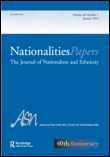 Fragmented memories in a fragmented country: Memory Competition and Political Identity-Building in Today’s Bosnia and Herzegovina
Fragmented memories in a fragmented country: Memory Competition and Political Identity-Building in Today’s Bosnia and Herzegovina
Nationalities Papers, Volume 41, Issue 6, 2013, 910-935
For more info online please FOLLOW THIS LINK
Bosnia and Herzegovina is politically fragmented, and so is the memory landscape within the country. Narratives of the 1992-1995 war, the Second World War, Tito’s Yugoslavia, and earlier historical periods form highly disputed patterns in a memory competition involving representatives of the three “constituent peoples” of Bosnia and Herzegovina—Serbs, Croats and Bosniaks—but also non-nationalist actors within BiH, as well as the international community. By looking especially at political declarations and the practices of commemoration and monument building, the article gives an overview of the fragmented memory landscape in Bosnia and Herzegovina, pointing out the different existing memory narratives and policies and the competition between them in the public sphere, and analyzing the conflicting memory narratives as a central part of the highly disputed political identity construction processes in post-war Bosnia and Herzegovina. The paper also discusses the question of whether a “Europeanization” of Bosnian memory cultures could be an alternative to the current fragmentation and nationalist domination of the memory landscape in BiH.
Book review:
Catherine Horel (ed.), 1908, l’annexion de la Bosnie-Herzégovine, cent ans après, Brüssel u.a. : Peter Lang, 2011 (= Enjeux Internationaux, vol. 13); in: Südosteuropa-Mitteilungen, 2/2013, 107-109
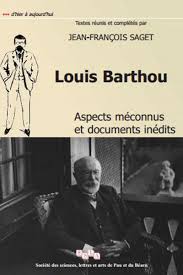 La mémoire de Louis Barthou et de l’attentat de Marseille en France et en Europe de 1934 à nos jours : les raisons d’un oubli (The memory of Louis Barthou and of the Marseille assassination in France and in Europe from 1934 until today: the reasons of an oblivion)
La mémoire de Louis Barthou et de l’attentat de Marseille en France et en Europe de 1934 à nos jours : les raisons d’un oubli (The memory of Louis Barthou and of the Marseille assassination in France and in Europe from 1934 until today: the reasons of an oblivion)
In: Jean-François Saget (ed.), Louis Barthou. Aspects méconnus et documents inédits, Pau, Société des Sciences, Lettres et Arts de Pau et du Béarn, 2013, 221-244
Louis Barthou was one of the most active politicans of the French Third Republic. Despite his long carreer and his spectacular death during the assassination of King Alexander of Yugoslavia on October 9th, 1934, in Marseille, Louis Barthou is today widely forgotten in France and in Europe. The article analyzes the reasons for this oblivion and the different attempts to (re)activate the public remembrance of Louis Barthou.
Vergangenheitsaufarbeitung (Dealing with the past)
In: Nicole Colin/Corine Defrance/Joachim Umlauf/Ulrich Pfeil (Hg.), Lexikon der deutsch-französischen Kulturbeziehungen nach 1945, Tübingen : Gunter Narr, 2013, 447-449
In the framework of the „Dictionnary of the French-German cultural relations after 1945“, this article describes how the actors of the French-German reconciliation process after 1945 until today were (not) dealing with the memories of the Second World War. In the fields of politics and civil society, most of the protagonists of French-German cooperation have for decades chosen to avoid critically addresing this difficult past, an attitude which has been challenged only since the 1990s.
 Deutsch-französische Gipfeltreffen (French-German Summit Meetings)
Deutsch-französische Gipfeltreffen (French-German Summit Meetings)
in: Nicole Colin/Corine Defrance/Joachim Umlauf/Ulrich Pfeil (Hg.), Lexikon der deutsch-französischen Kulturbeziehungen nach 1945, Tübingen : Gunter Narr, 2013, 182-183
Regular summits between the German Chancellor and the French President have become a strong symbol of the tight French-German cooperation today. This article in the „Dictionnary of the French-German cultural relations after 1945“ describes how summit meetings became a symbol and an instrument of French-German cooperation and how this political ritual evolved in the last 50 years.
Effacer le passé au nom de l’amitié ? La gestion des mémoires de la Seconde Guerre mondiale au sein du processus de réconciliation franco-allemande (Erasing the past in the name of friendship? The French-German reconciliation process and the dealing with the memories of the Second World War)
In: Allemagne d’aujourd’hui 201, Juillet-Septembre 2012, 28-39
The memories of the Second World War represented a strong challenge for those who wanted to work for a rapprochment of France and Germany after 1945. Should dealing with these memories be integrated in the reconciliation process or should this deliberately be avoided?During the 1950s and 1960s, the attitude seeing the reconciliation between both countries as incompatible with an active dealing with the Second World War became stronger and stronger. The article describes the emergence of this attitude, anlayses the reasons why it became so dominant within the field of French-German relations, and points out evolutions of this attitude in the last twenty years.
Les survivants de Prijedor (The survivors of Prijedor)
In: Vacarme, n° 59, printemps 2012, 190-202
For more info online please FOLLOW THIS LINK
Prijedor, in North-Western Bosnia and Herzegovina, has been the place of one of the most systematic and murderous ethnic cleansing-campaigns in the war in Bosnia and Herzegovina. The article recalls what happened in 1992 and describes how the survivors who chose to come back to Prijedor after the war are trying to fight against the omnipresent denial of the crimes of 1992.
Kampf gegen den Terror. Das Attentat gegen den jugoslawischen König Alexander in Marseille 1934 (Fighting against terrorism. The assassination of King Alexander of Yugoslavia in Marseilles in 1934)
In: Damals 6/2012, 72-77
The spectacular assassination of King Alexander of Yugoslavia in Marseille in October 1934 created a European crisis which was resolved by a settlement within the League of Nations in Geneva in December 1934. One of the consequences of this settlement was the establishment of a commission, which despite many difficulties, led to the first international convention for the fight against terrorism and for the creation of an International Criminal Court, in 1937.
“Pourquoi parler de cela?“ La guerre dans les rencontres franco-allemandes („Why talk about this?“ The war in French-German encounters)
In : Dokumente-Documente, 4-5/2011, 81-85
“Did you talk about the war during your French-German encounters between 1945 and today? If yes, how? If not, why not?” First impressions and results of a collection of personal testimonies from individuals who have participated in French-German encounters from the 1950s until today.
With Sonja Hegasy:
An end to Age-old Animosities.A Plea for a Euro–Mediterranean Youth Exchange Organisation
For more info online please FOLLOW THIS LINK
English version avialable online: FOLLOW THIS LINK
German version avialable online: FOLLOW THIS LINK
In order to contribute to the overcoming of political, social and cultural barriers between the societies of Northern Africa and of Europe, the creation of a Euro-Mediterranean Youth Office in 2013, 50 years after the creation of the French-German Youth Office, could be an important symbolic and practical stepmark.
Book review:
Wolfgang Petritsch / Vedran Džihić (Eds.), Conflict and Memory: Bridging Past and Future in [South East] Europe, Nomos, Baden-Baden, 2010 (= Southeast European Integration Perspectives, edited by Wolfgang Petritsch and Christophe Solioz)
In: Südosteuropa-Mitteilungen, 1/2012, 85-86
PDF available online: DOWNLOAD PDF
Book review:
Nada Boškovska, Das jugoslawische Makedonien 1918-1941. Eine Randregion zwischen Represssion und Integration, Böhlau-Verlag 2009,
in: Südosteuropa-Mitteilungen, 2/2011, 114-115
Un Mémorial évoque forcément des questions qu’on n‘a pas envie de se poser
(A memorial is necessariliy raising questions you dont want to ask yourself)
Interview available online: FOLLOW THIS LINK
Also published in the „Courrier des Balkans“, 23/2/2011, with the title: Histoire et mémoire en Bosnie-Herzégovine: comment parler de la guerre? (History and memory in Bosnia and Herzegovina: how to talk about the war?):
Available online: FOLLOW THIS LINK
The interview deals with the difficulties of Western German society in the 1950s and 1960s to deal with the past of the Third Reich, and adresses the question, „To what extent can looking at the German example be useful for Bosnia and Herzegovina today?“
„What was it like during the siege of Sarajevo?“ War and war memories as a challenge for the South Eastern Europe Initiative of the FGYO
in: French-German Youth Office (ed.), Dialogues for a European future. 10 years of the South Eastern Europe Initiative of the Franco-German Youth Office, Berlin/Paris 2010, 17-19
English version PDF: DOWNLOAD PDF
German version PDF: DOWNLOAD PDF
French version PDF: DOWNLOAD PDF
Since 2010, the French-German Youth Office (FGYO) has developed exchange programs with civil society actors from France, Germany and the different successor states of Yugoslavia. This article suggests how to deal with war memories in this kind of exchange, by giving an overview of the activities of the FGYO which deal with war-related questions. It also discusses the pedagocial challenges this work presents.
Book-review:
Thorsten Gromes, Demokratisierung nach Bürgerkriegen. Das Beispiel Bosnien und Herzegowina, Campus 2007,
in: Südosteuropa-Mitteilungen, 4-5/2010, 153-155
 Francusko-njemačko pomirenje i Balkan: motivacija, a ne model (The French-German reconciliation and the Balkans: a motivation, not a model)
Francusko-njemačko pomirenje i Balkan: motivacija, a ne model (The French-German reconciliation and the Balkans: a motivation, not a model)
In: Bosna Franciscana 32/2010, 163-181
In: Status. Magazin za politicku kulturu i drustvena pitanja, 14/2010, 264-275
B/C/S-version of the text published in “L’Europe en formation” in 2008 (see below).
Based on almost 10 years of experiences in French-German exchanges in and with the Western Balkans, this article analyzes differences and similarities of both war and postwar-histories and discusses the extent to which the French-German experience can be useful for civil society–exchange programs and the post-war process in the Western Balkans.
Available online as PDF: DOWNLOAD PDF
With Frank Morawietz:
Eine Beziehung im Dienste Europas. Fünf Thesen zur deutsch-französischen Freundschaft (A relation for Europe. Five thesis related to the French-German friendship)
In: Dokumente-Documents 1/2010, 7-10
This article presents a] plea for the necessary renewal of French-German cooperation, which should avoid self-satisfaction and self-isolation and should develop a new dynamism in order to give fresh incentives to the European integration process and to French-German relations itself
